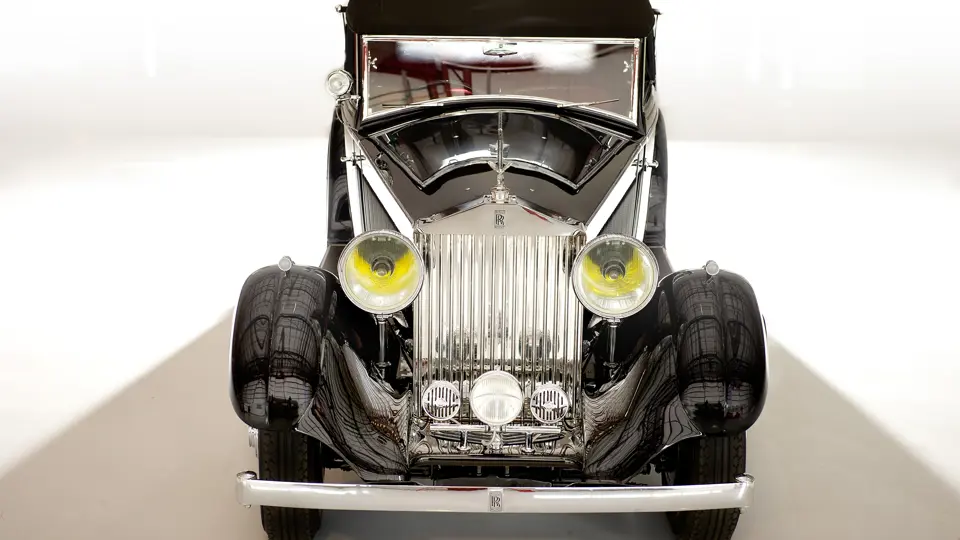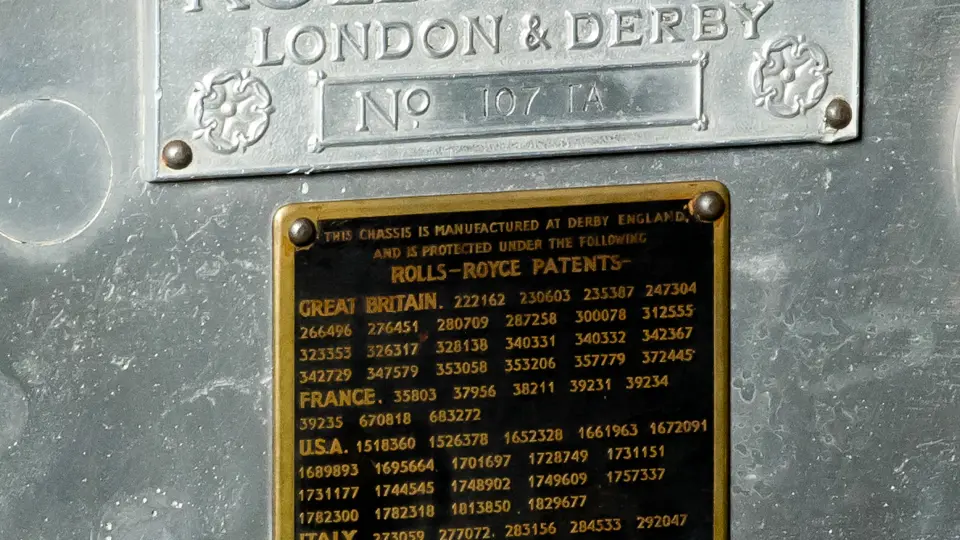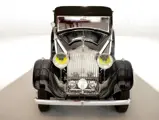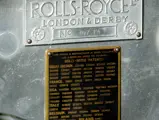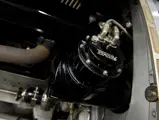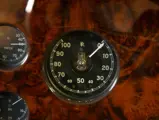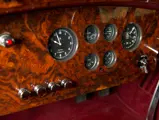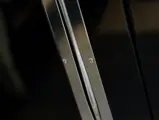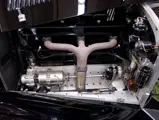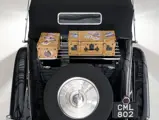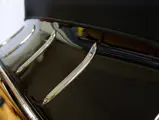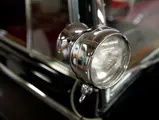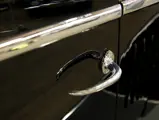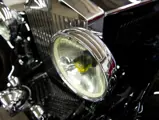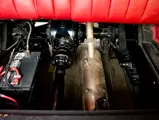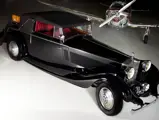120 hp, 7,668 cc, OHV six-cylinder engine, single updraft carburetor, four-speed manual gearbox, front and rear semi-elliptic leaf springs, live rear axle and mechanical drum brakes, with power assist. Wheelbase: 150"
- Handsome, one-off drophead coupe coachwork
- A very rare example; one of only two TA Series Continentals in DHC form
- Beautifully presented and restored at great expense
- Prominently featured in Lawrence Dalton book Those Elegant Rolls-Royces (pg. 266, 1973 edition)
The Phantom II was the last Rolls-Royce model designed by Sir Frederick Henry Royce, 1st Baronet, OBE before his death in 1933. Company records indicate that Royce had no defined specifications to delineate the Phantom II “Continental” from the standard Phantom II, only that it should be as small as possible yet still comfortably seat four adults and their luggage while touring the continent of Europe.
The resulting design, Royce ordered, was to be so close-coupled that the entire rear seat was completely in front of the rear upsweep of the frame side-members. In order to allow adequate leg room for rear seat passengers, the Continental’s floor was designed with roomy foot wells.
The Continental was developed from the standard Phantom II short chassis model with an especially low steering column, special springs to permit safe and continuous high speed touring over bad roads and a low center of gravity. The result was a sporting car with a low and sleek appearance, ample luggage space and a roomy interior. The radiator shell was slightly higher than the standard Phantom II, which combined with the lower chassis resulted in a stance that fools the eye – it appears to be traveling at high speed, even when parked.
Most PII Continentals were fitted with lightweight, low-slung bodies. Many collectors in fact believe there may be no more reliable prewar car than the Phantom II Continental, the final evolution of the prewar straight six engine Rolls-Royce first introduced in the 1907 40/50-hp Silver Ghost.
The company specifically targeted its buyer, as can be determined from Rolls-Royce advertisement copy from the mid 1930s: “The Rolls-Royce Phantom II Continental is specially produced for fast touring abroad, and what better facilities exist than in Great Britain for high speeds over long distances?” Designed for the privileged few, the chassis price in 1935 was £1,850 for the short chassis and £1,900 for the long version. In today’s U.S. dollars that translates to roughly $200,000 for the chassis alone. And of course, as was standard with all high-end motor car manufacturers in prewar years, the engine and chassis were ordered from the motor car manufacturer, and the bodies were designed and purchased at additional expense from a wide array of coachbuilders. In today’s dollars, a custom car body built for a Phantom II could easily add hundreds of thousands to the chassis price. As beautiful as they are, these were also among the most powerful cars of their time, as road tests confirmed. The Autocar published results in August 4, 1933 for the Phantom II Continental with a timed top speed of 92.31 mph. On March 20, 1934, The Motor recorded a top speed of 90.2 mph and 0 to 60 mph in 23 seconds. This was extremely impressive for the mid 1930s.
Allweather Motor Bodies was formed in 1935 and maintained premises in Kilburn, London until 1955. The company built a select few bodies for Rolls-Royce, including this rare example which, as the name implies, benefited from the company’s expertise in cabriolet coachwork. Chassis number 107TA was ordered through London West End dealer Jack Barclay by A. Simpson of 88 Fitzjohns Avenue, Hampstead, an up-market neighborhood onto itself. The chassis was sent to the coachbuilding firm of Allweather Motor Bodies with instructions to build a Drophead Coupe body for “high speed touring” in the UK and continental Europe. The car was to be equipped with six Dunlop Fort Silent Tread tires on the later specification 7x19-inch Dunlop wire wheels. It also features sweeping fenders, an exceptionally long hood with side louvers, low windscreen and dual rear-mounted spares which make it undoubtedly one of the most elegant yet sporting designs.
This 1935 Rolls-Royce Phantom II Continental Drophead Coupe also had a seven-page feature spread in the Florida division of the Classic Car Club of America publication – a distinguished publication in which a large feature spread speaks volumes about a car’s quality. The article details the beauty and power inherent in the Rolls-Royce Phantom II Continental Drophead Coupe: “From any angle this is a beautiful masterpiece in metal. The use of outer landau bars was passé but appropriate for this body design and the dual spare wheel and tire carrier gives the impression of additional length.”
Rolls-Royce’s records validate this car’s current drophead coupe configuration, the way it was delivered new. Its exceptionally long and low appearance is due in part to the original owner’s request that the top center bonnet hinge be nine inches longer than standard. The resulting long, low bonnet line is unique and certainly very attractive. A period photograph taken of 107TA in London can be found in Lawrence Dalton’s 1973 book Those Elegant Rolls-Royces (page 266), wearing the correct wheel covers and blackwall tires, with which it was delivered.
Now offered from a prominent private collection and formerly in the Robert Pass Collection, the car has been restored at great expense and has been honored with awards at both Meadow Brook and Pebble Beach. It is breathtakingly presented in black with luxurious red leather and wood trim.
There were 1,392 Phantom II standard chassis built and an additional 280 “Continental” units. Of the Continentals, 15 were of the TA series. Of the 15 TA series, only two were bodied with drophead coupe designs, one by H.J. Mulliner and the other by Allweather. Therefore, it is well documented that this car is indeed a “one-off.” Like the Silver Ghost and the New Phantom that preceded it, the Phantom II was offered in both short and long chassis. This particular model is the long version which consists of a 150-inch wheelbase.
Form meets function, as the superb proportions of almost all coachwork fitted to these chassis demonstrate why the Phantom II Continental has steadily achieved special interest among collectors who are as appreciative of fine engineering as they are of motor cars as works of art. The discerning enthusiast will find in 107TA a unique motor car that is at once handsomely coachbuilt and replete with the sporting pedigree of a Rolls-Royce Phantom II Continental. From its elegant landau irons to the long hood, this Phantom II has a stately presence all its own.
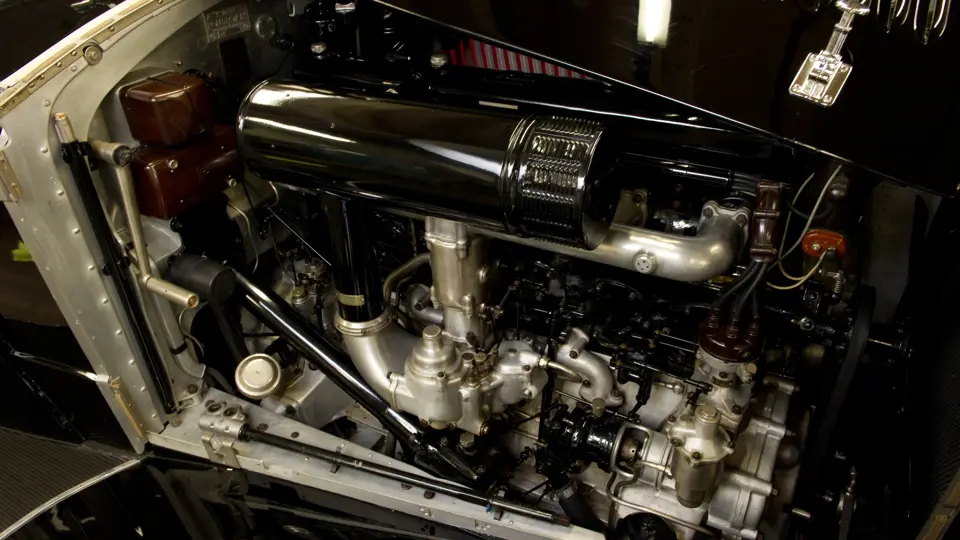


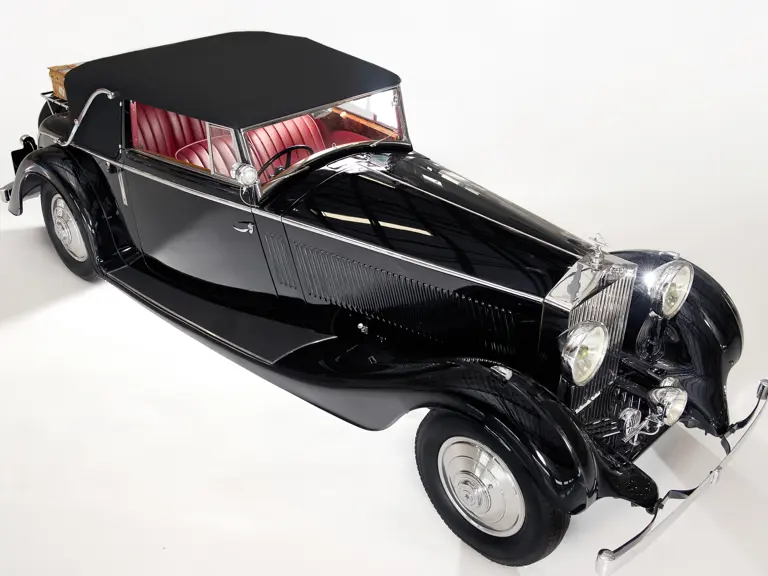
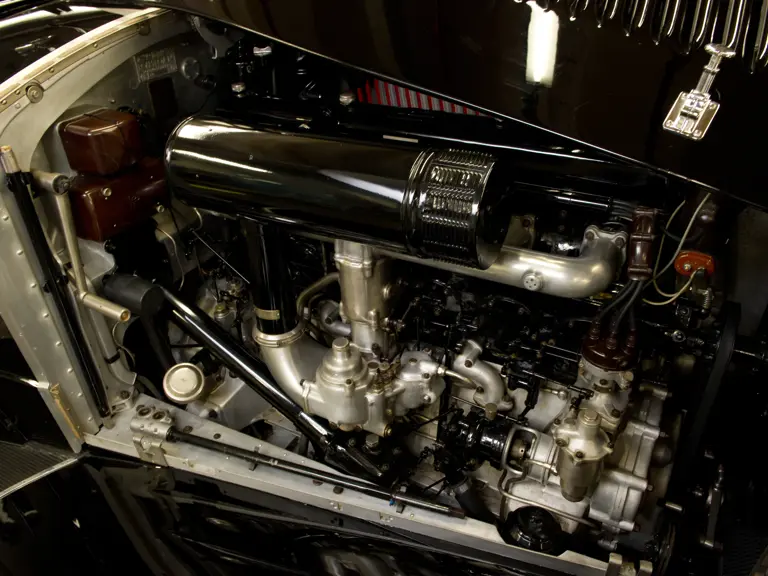
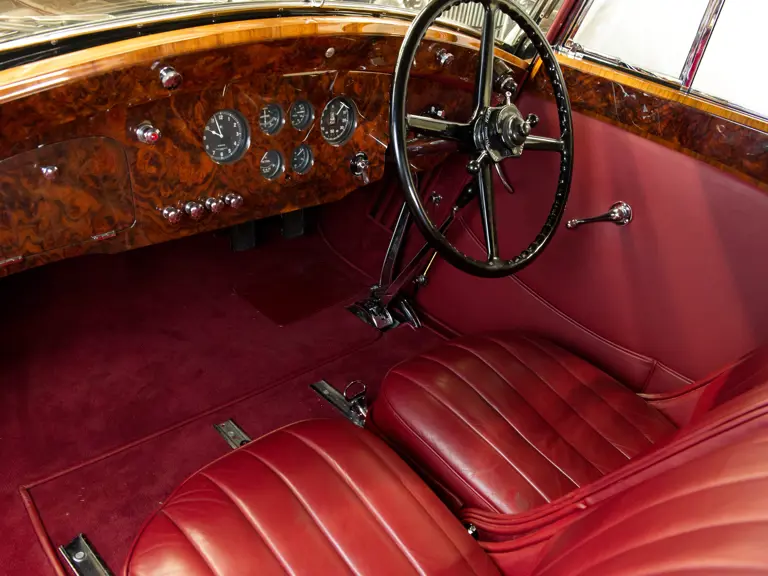
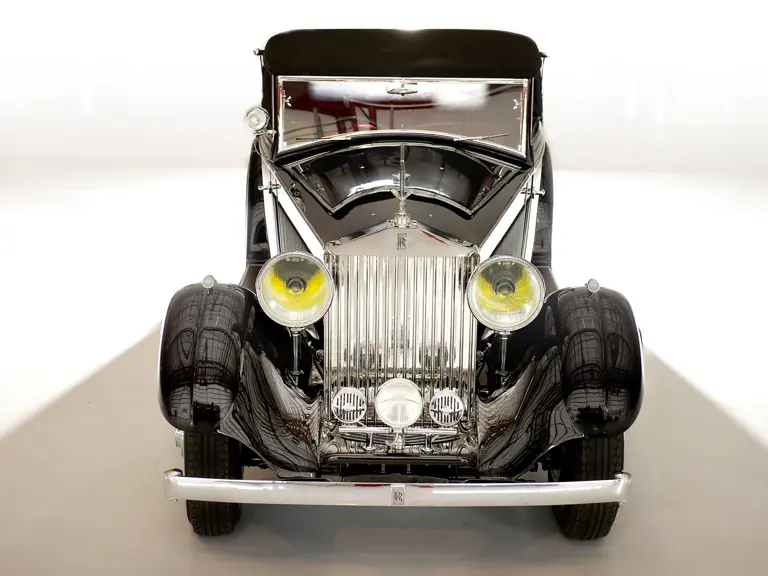
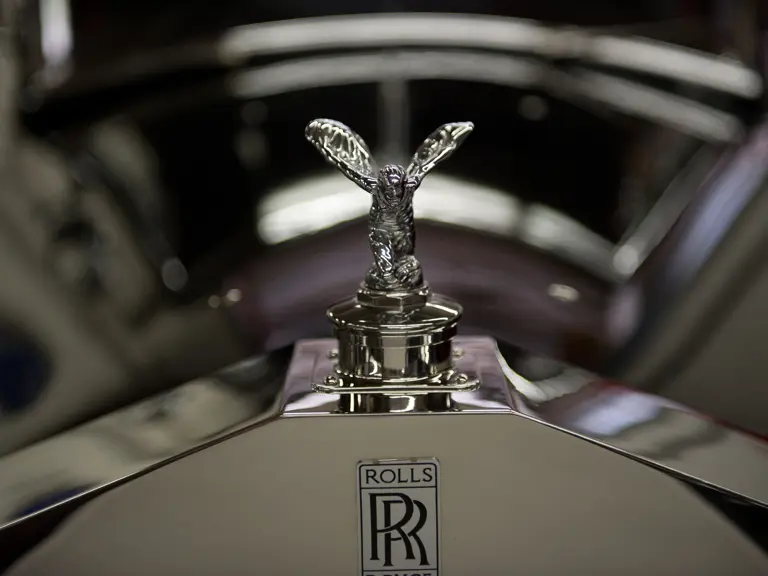

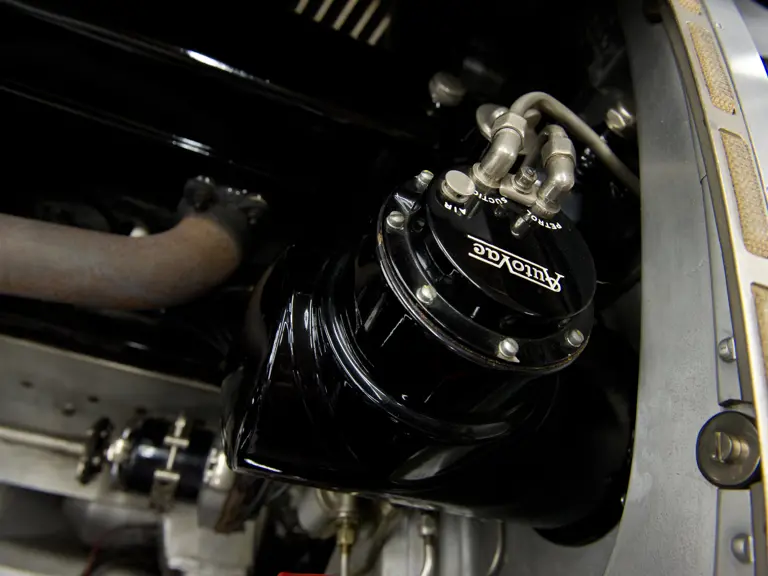
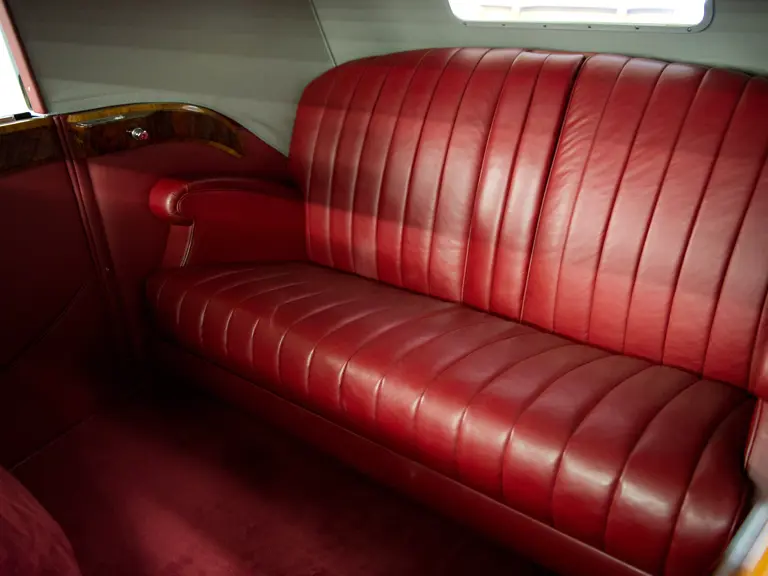
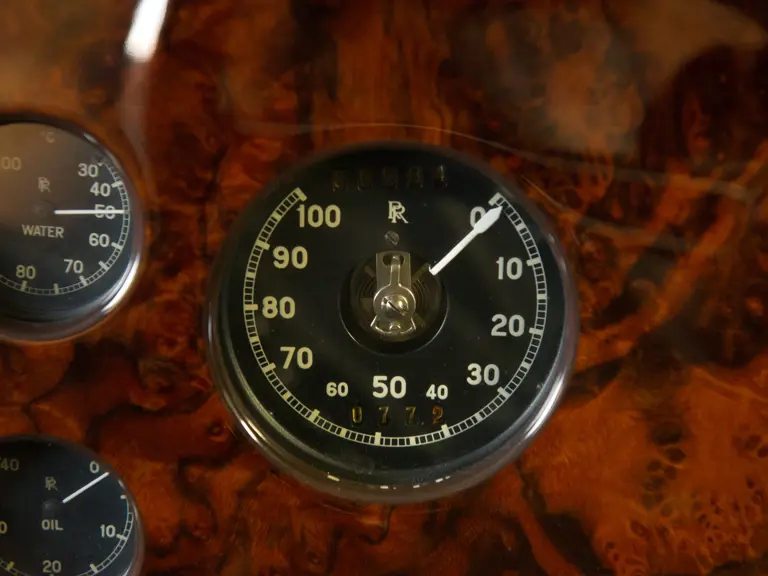
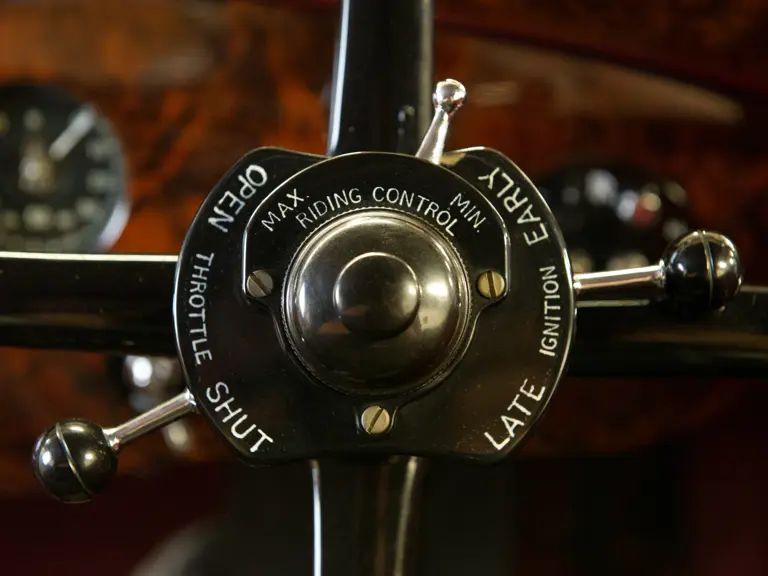
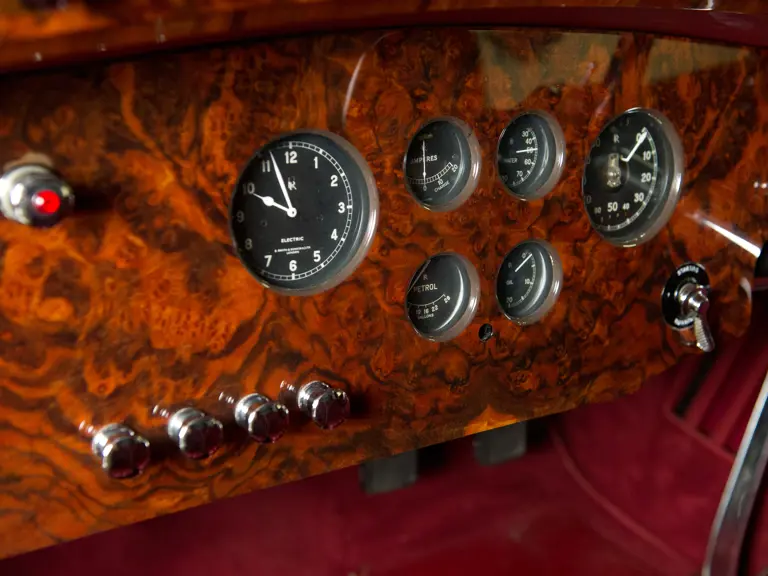
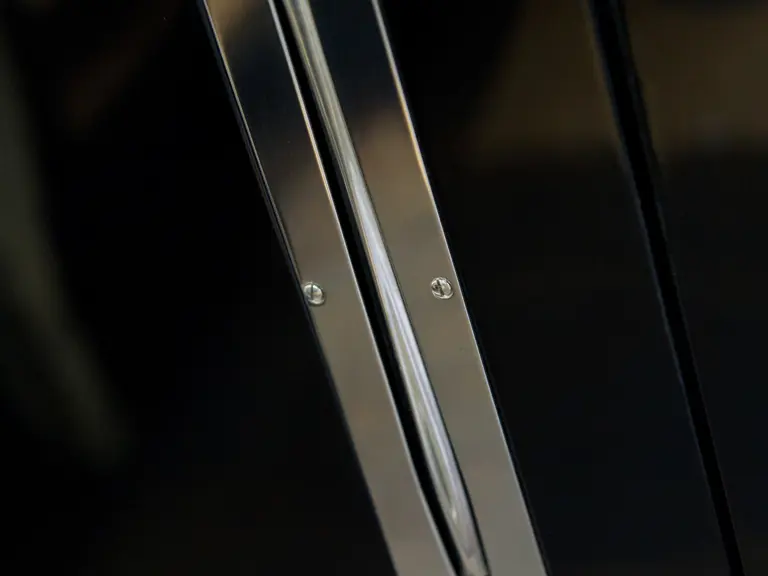


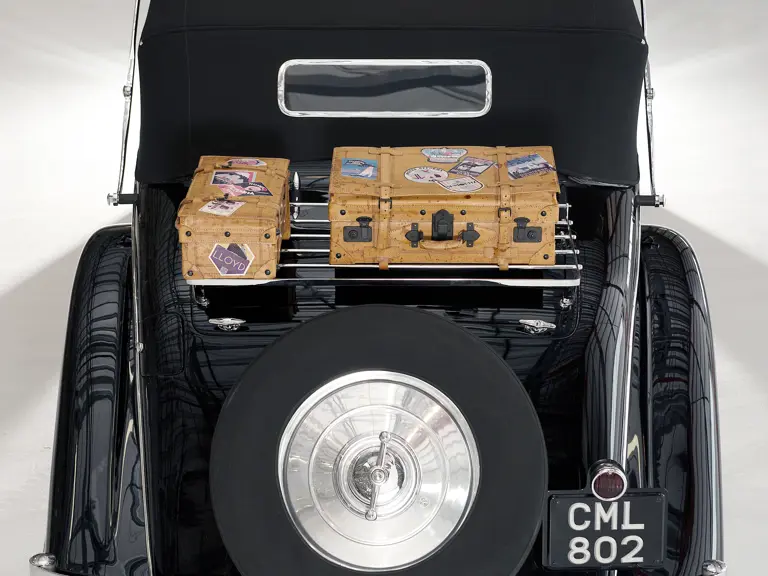

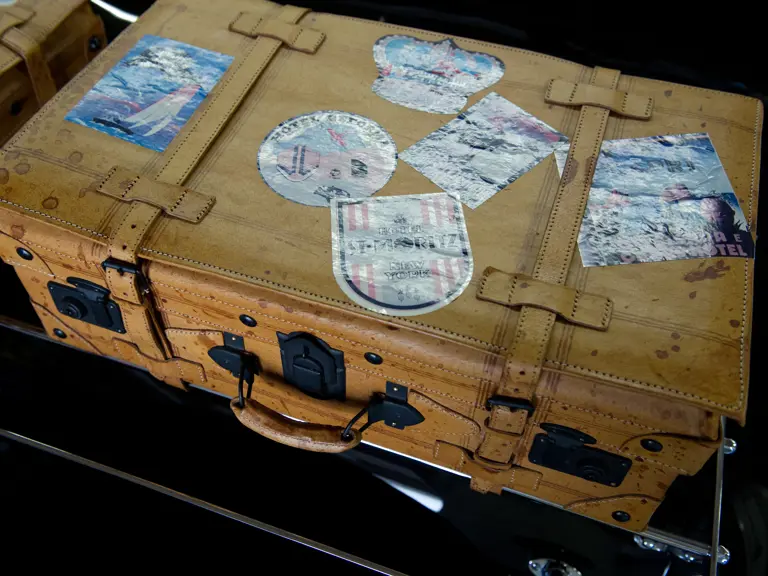

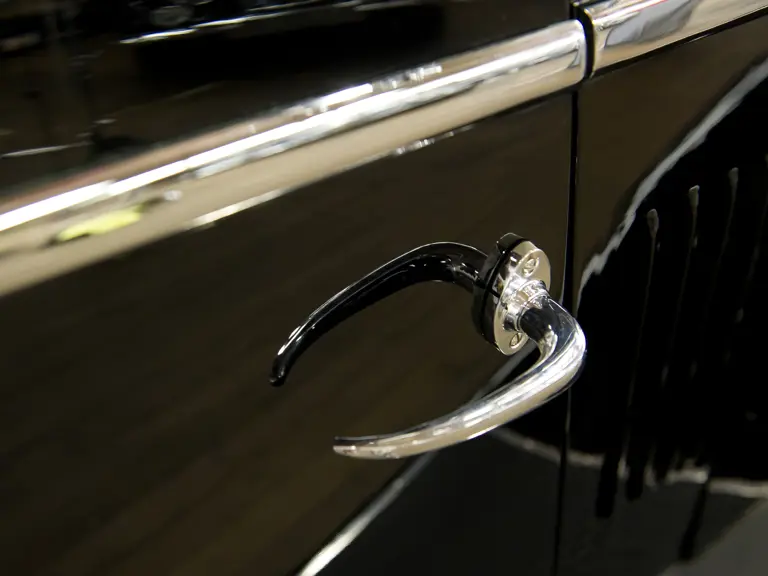

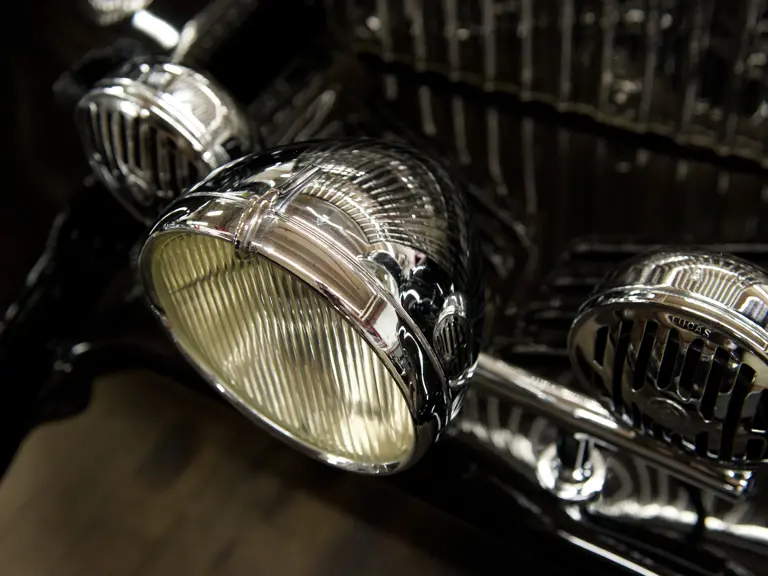
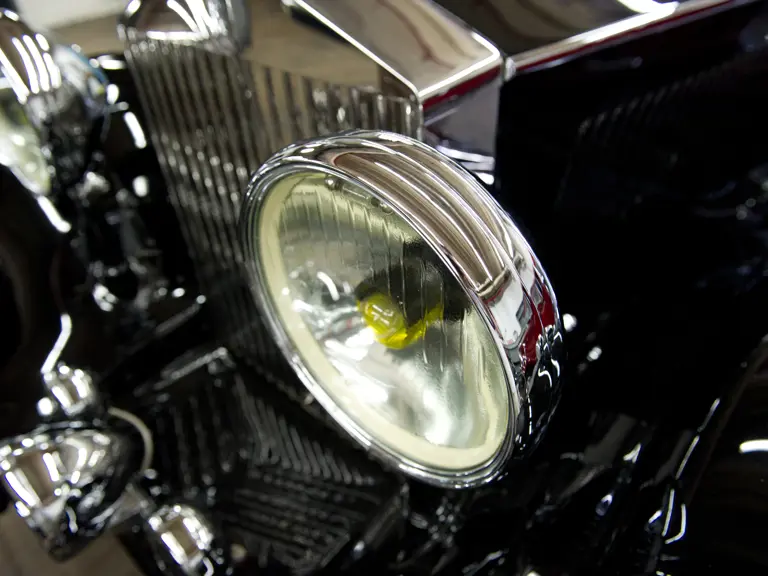
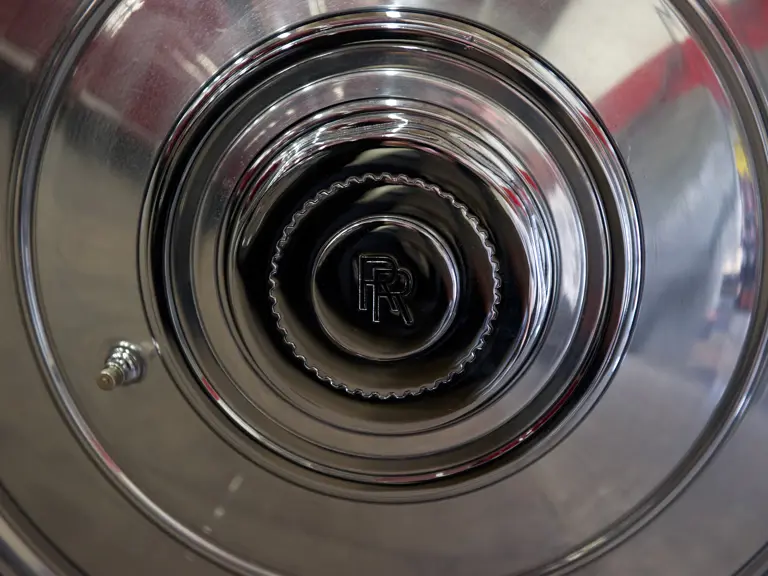
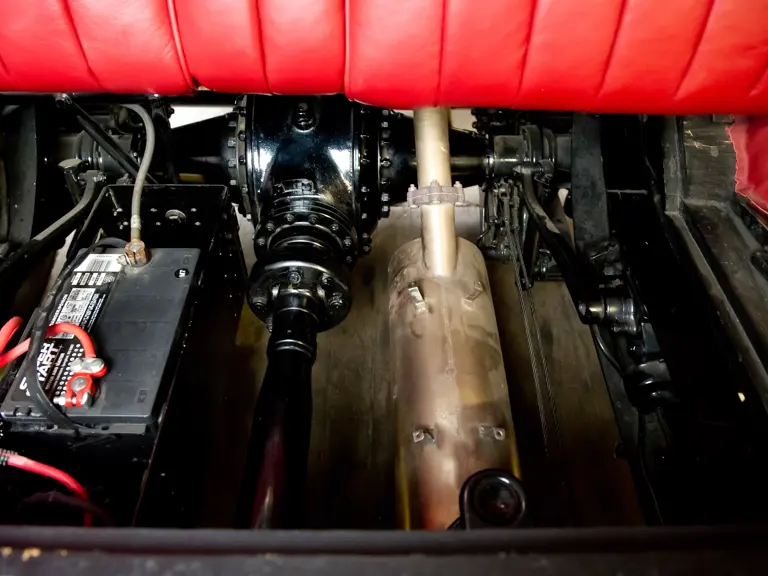

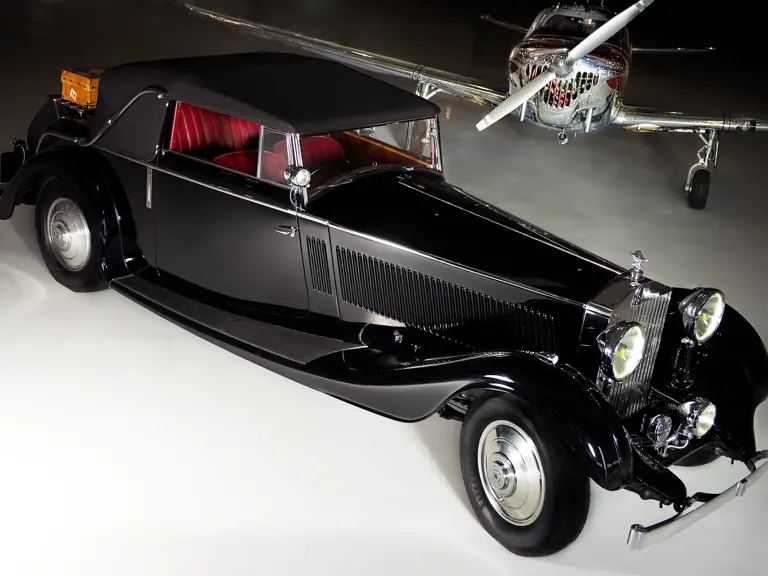
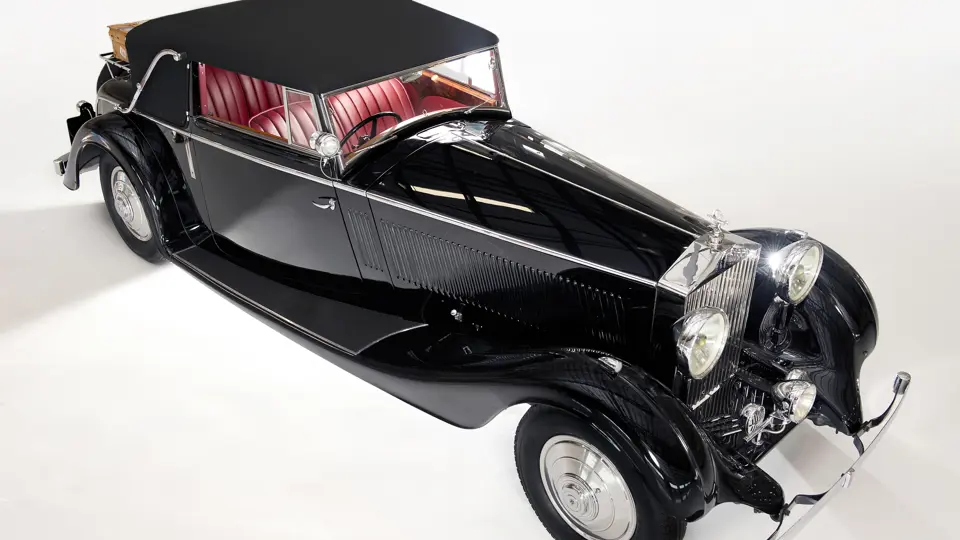
 | Monterey, California
| Monterey, California
